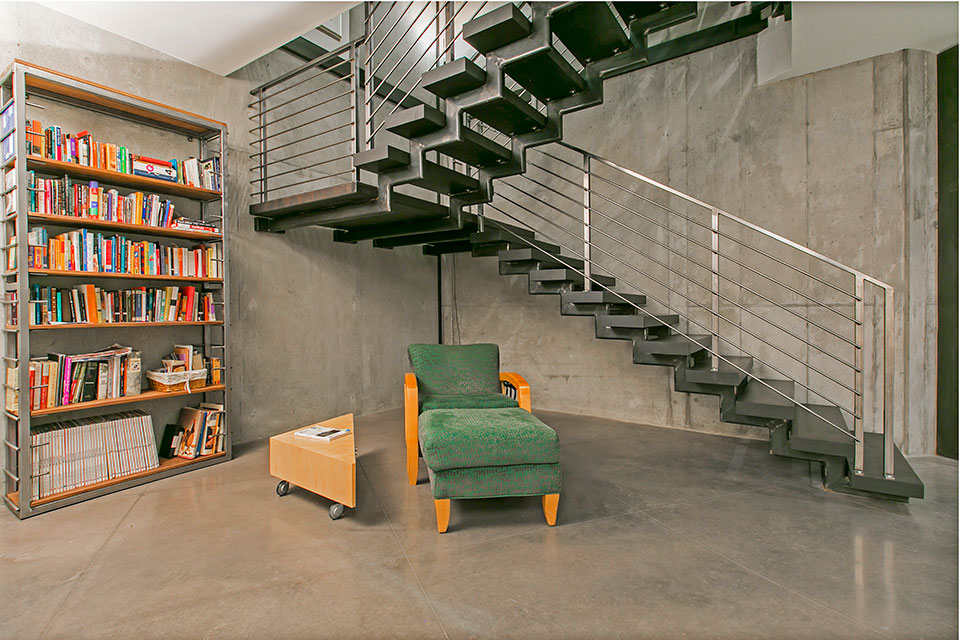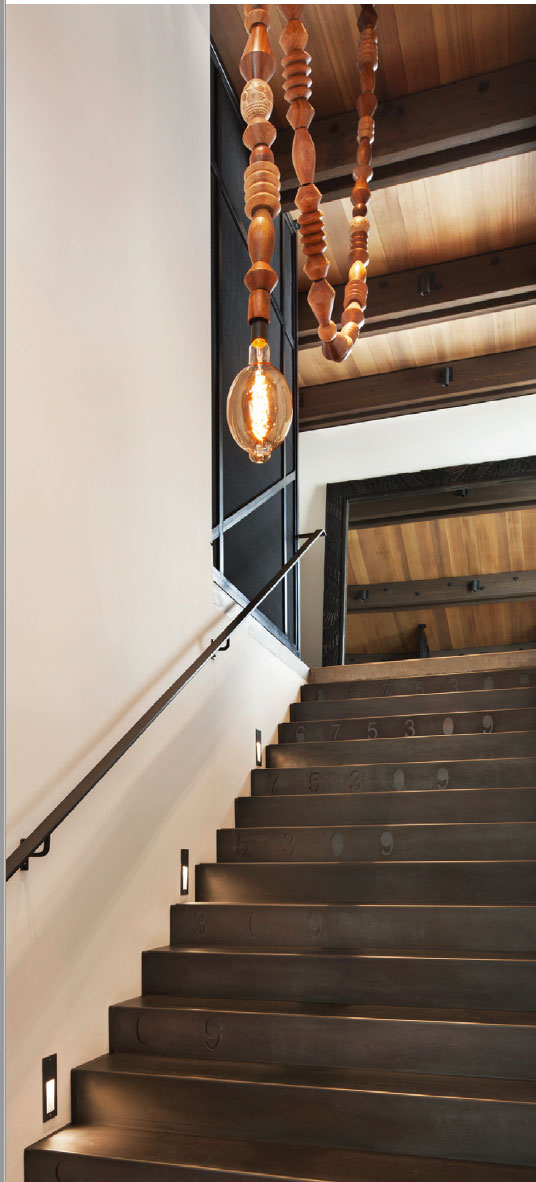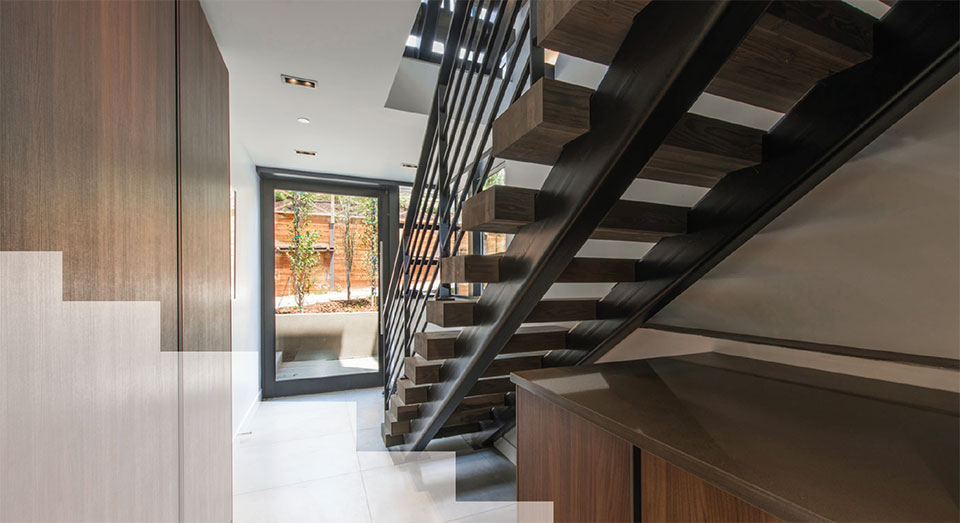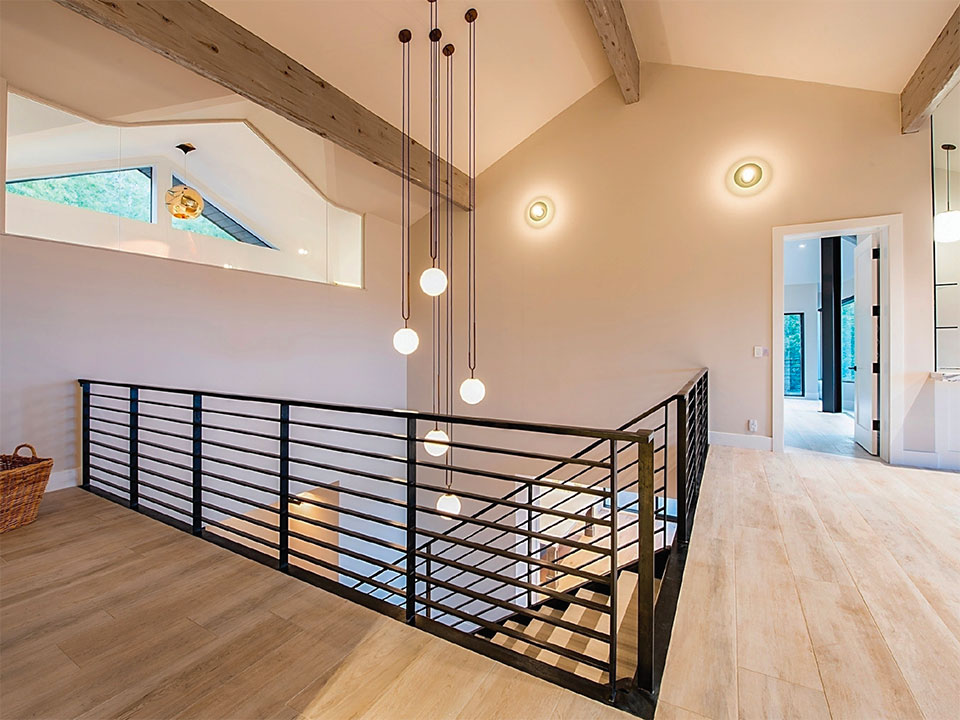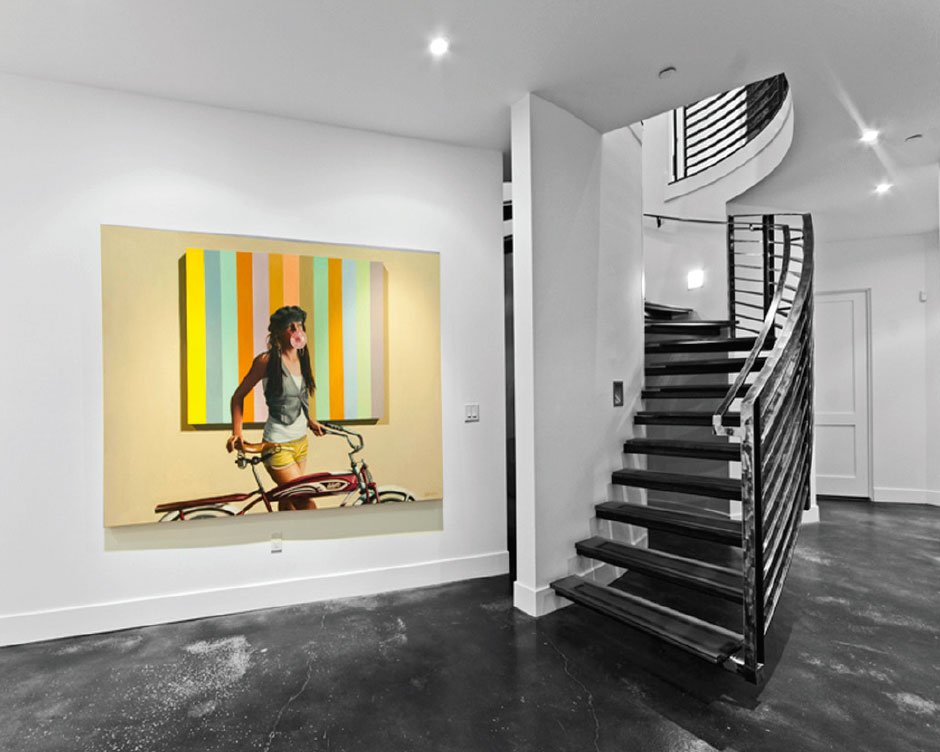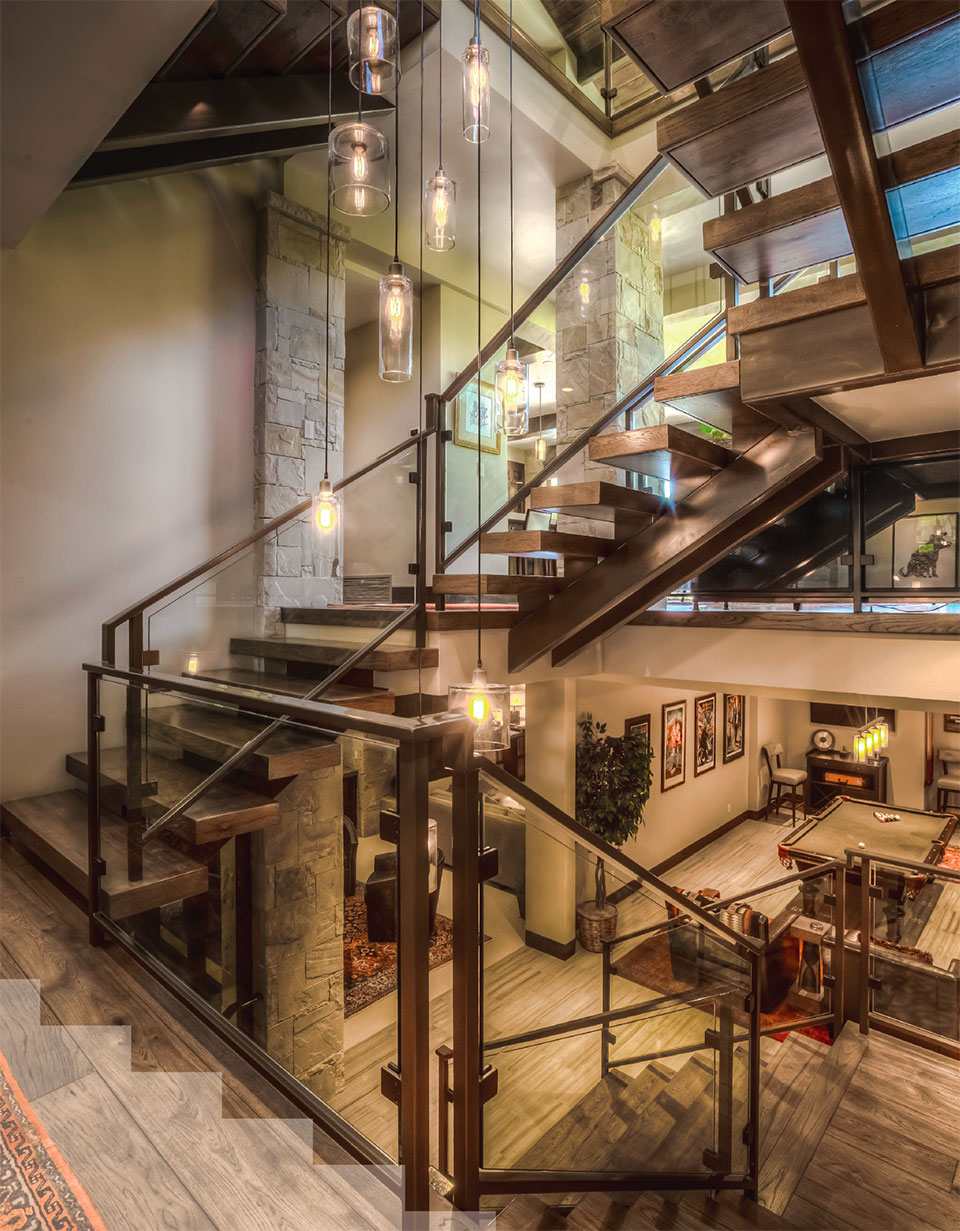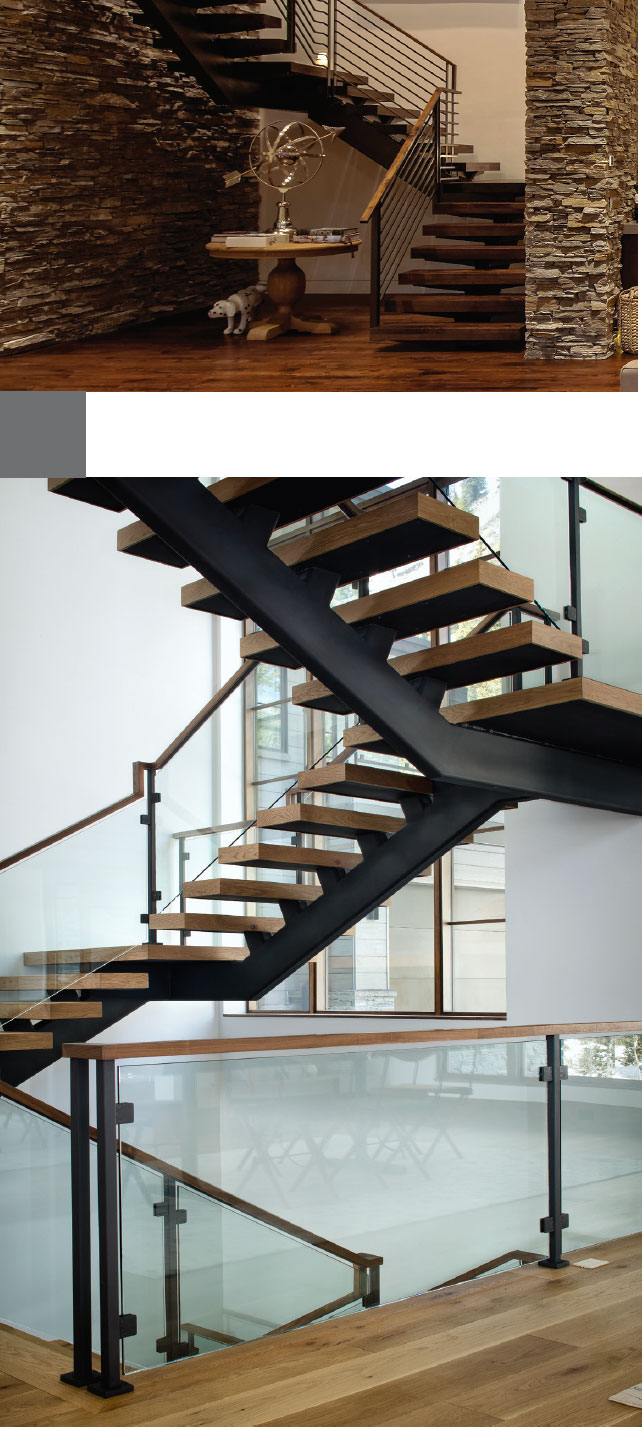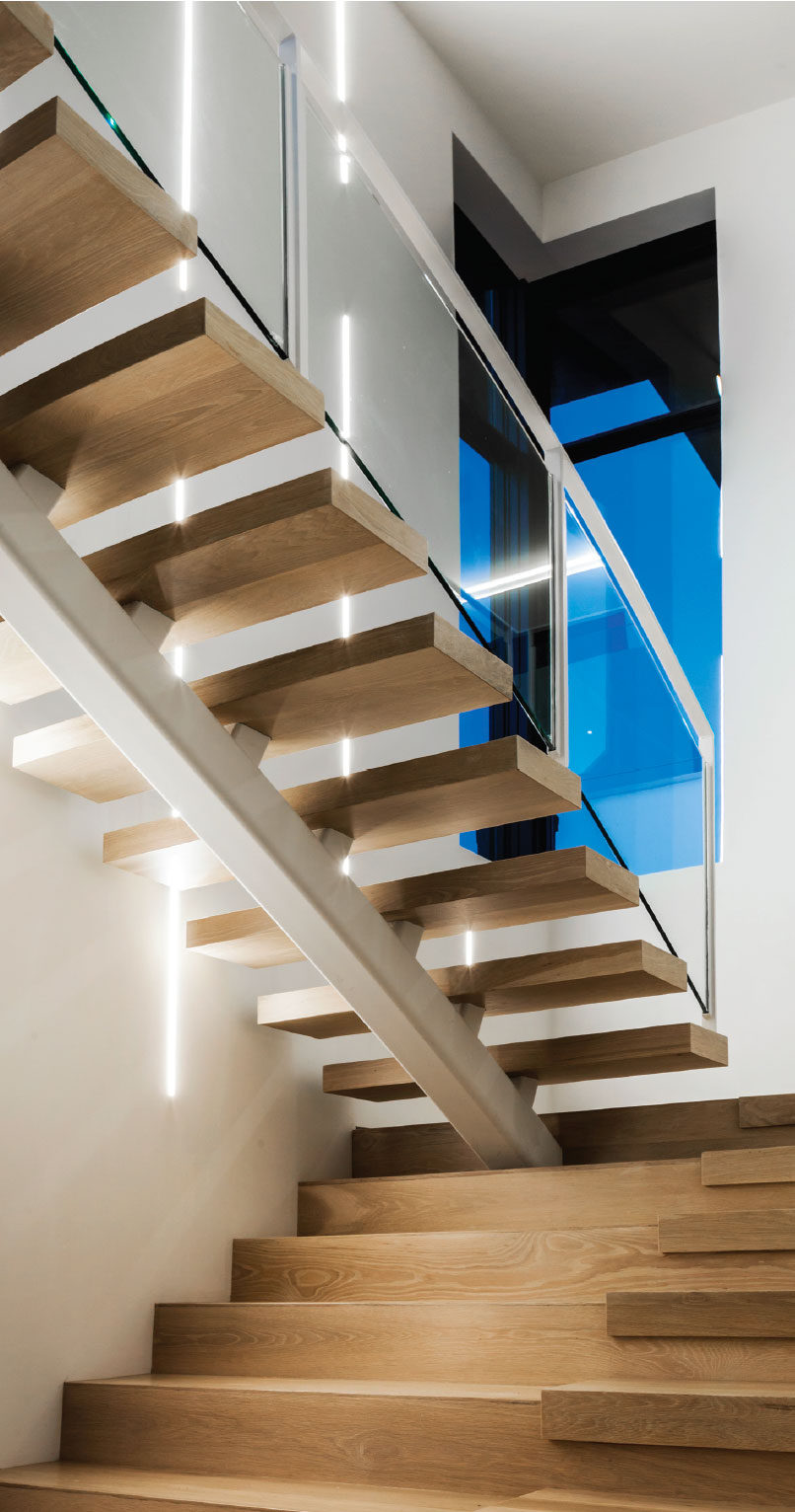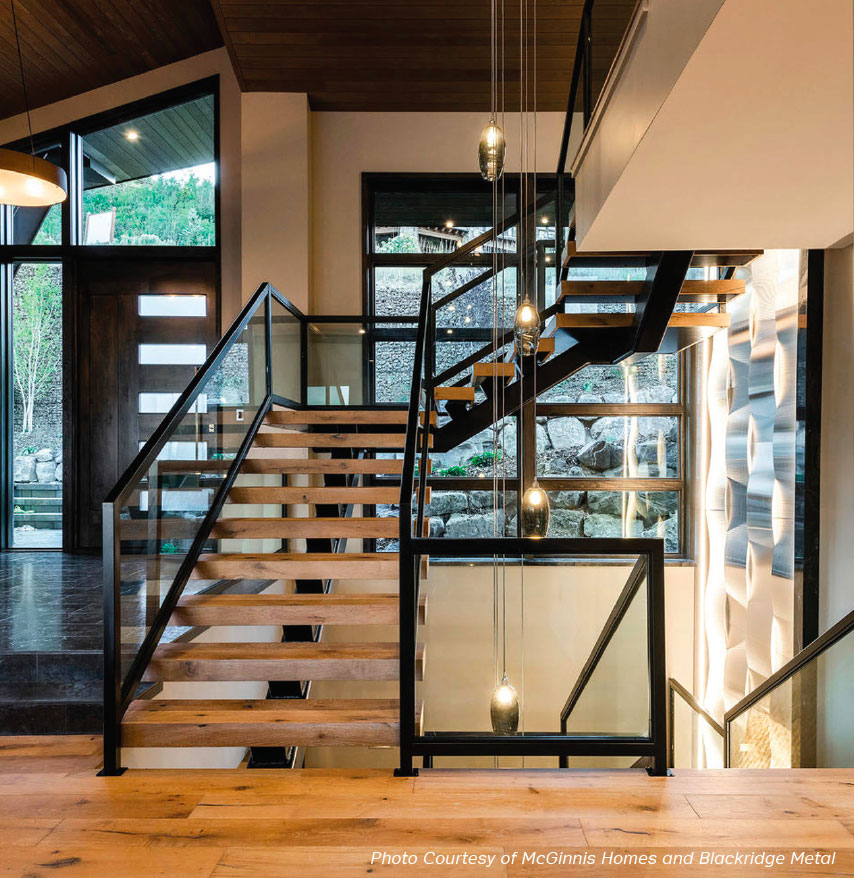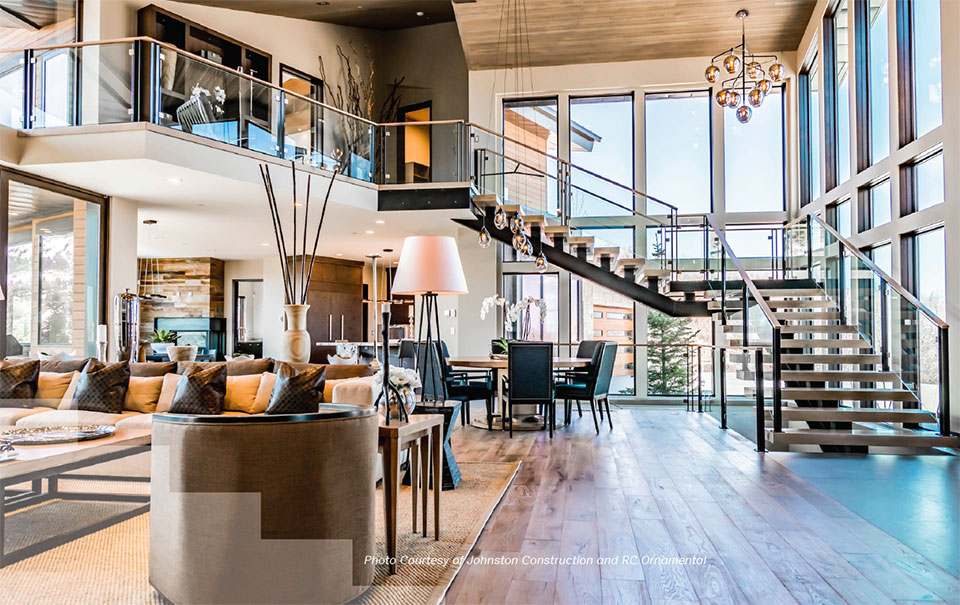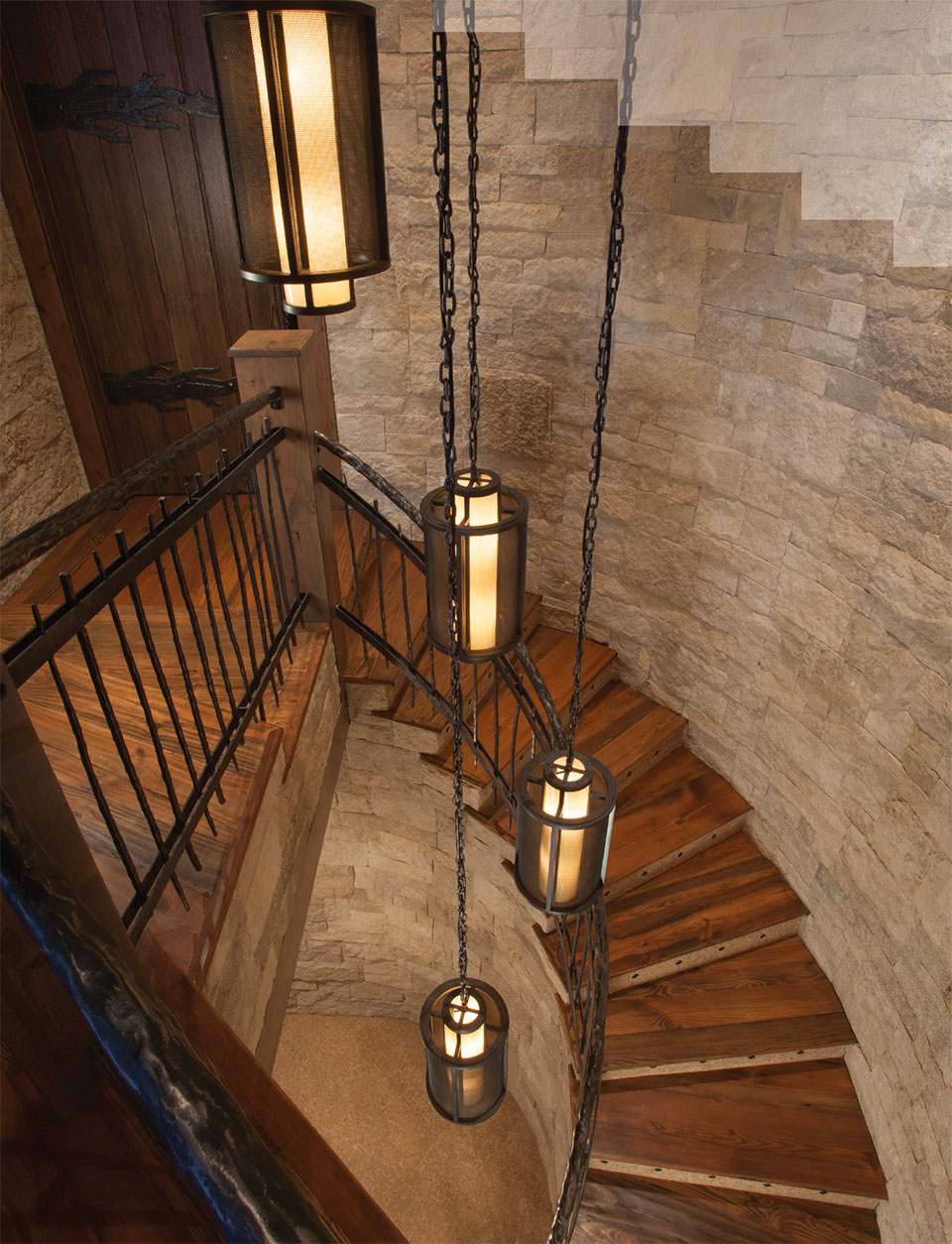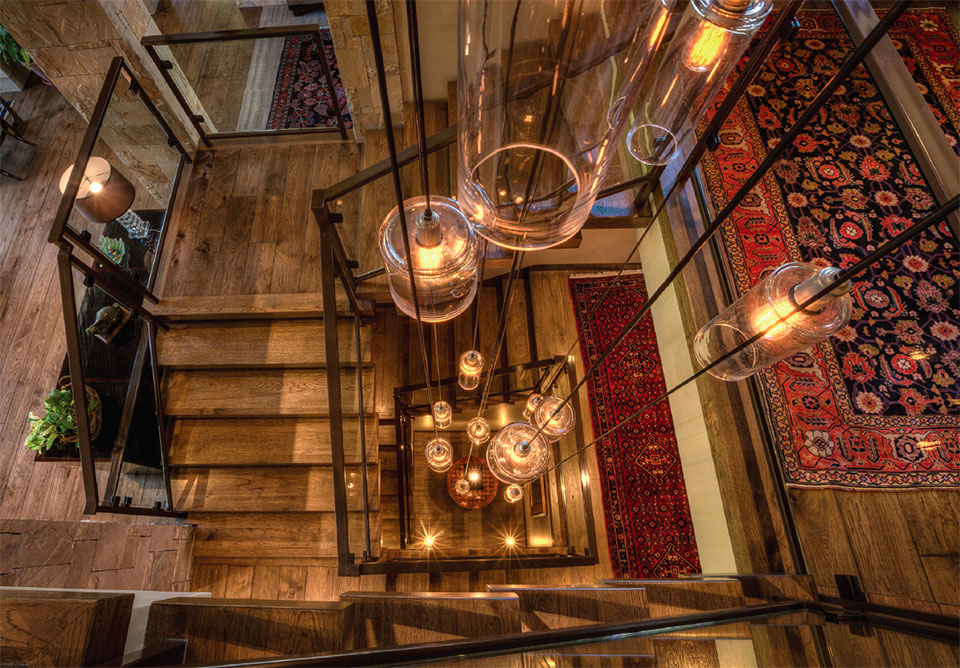by Heather Mooney
Of all the innovative technology developments, stairs have seen the largest change in home building in the last five years. New materials have afforded this once commonplace necessity a new avenue for artistic expression in the mountain home. No longer being constricted by the physical and aesthetic limitations of wood, steel, and glass brings a revolutionary facelift to the simple set of stairs.
Go West Development
Whereas wooden stair fabrication required closed-in stairs, the open design of steel stairs allows for more imagination. “Where as it all used to be wood, we can now try lots of different materials on the treads. We’re still finding opportunities and getting used to how strong steel is,” says Preston Campbell, founder of Go West Development. He emphasizes that with opportunity comes specificity, and that the company uses one steel fabricator that they love. “Just because someone does steel, doesn’t mean they do stairs. Since it is so specific, we always use the same company that does a great job,” shares Campbell.
Campbell sees three types of constructions and attachments most popular in the homes that Go West Development works on. “There’s broken-back stringers, tubes (either a single tube down the middle or two down the side), or wide-flange (I-beam). Broken-back stringers require a lot of welding, while tubes are the strongest, and wide-flange has a more industrial look,” notes Campbell. And among each stringer type, myriad tread attachments are available.
“It used to be, ‘How do I get upstairs?’and the question now is ‘How do I float a staircase and enjoy it as part of the space?’”
–Preston Campbell, Founder, Go West Development
Steel’s strength and durability is much greater than that of wood, it is also much less forgiving than its counterpart. A steel stair must be designed early in the process and fabricated off-site; it cannot be cut or adjusted at the last minute. While implementation of a stunning steel staircase requires more planning, often requiring a crane for installation, it is fitting of its greater place in the design process. “It used to be, ‘How do I get upstairs?’, and the question now is ‘How do I float a staircase and enjoy it as part of the space?’,” says Campbell. With the staircase’s opportunity to be a striking element of the design, it is only fitting that it becomes an essential element of planning early on, offering a beautiful touch to the entire home.
Stairs shown were designed and built by Innovative Iron.
Otto-Walker Architects
With the flexibility afforded by new stair materials, specifically steel, Otto-Walker Architects implements the staircase as a focal point, both visually and tangibly. Rick Otto, principal and co-founder of Otto-Walker Architects, sees it as a creative exclamation in the floor plan. “We take pride in using the stair as opportunity for a striking artistic element,” notes Otto.
“We create an emphasis on the stair through lots of natural light. Keeping it open allows the transfer of light to the lower level via the stair.”
–Otto Walker, Principal & Co-Founder, Otto-Walker Architects
Open stairs provide opportunity for the integration of light and shadow to detail the space. “We create an emphasis on the stair through lots of natural light. Keeping it open allows the transfer of light to the lower level via the stair,” says Otto. Otto-Walker’s designs are not limited to the aesthetic of the stair in isolation; they take its interaction with the space into consideration to apply a functional work of art that extends beyond its structural manifestation.
Beyond the stunning visual of a light-flooded steel stair, its thoughtful implementation in the flow of the home adds subconscious ease to the space. “Logical stair placement is an essential element in creating good flow within the house, and we do just that with floor plans that flow and create space rather than wasting space,” notes Otto. Known for creating logical flow in beautiful spaces, it is only natural that Otto-Walker excels with creative stairs, as a natural extension of their philosophy and practice.
Silver Mountain Glass
Mike Wirthlin, of Silver Mountain Glass, delights in this artistic and creative element of the home. “We seek a flowing and sleek design, with the staircase as the focal point. One home in particular had a staircase wrapping around the elevator, the centerpiece of the home,” says Wirthlin. With open and sweeping stairs comes the opportunity for more play of light, and there’s no material better for this than glass.
Glass provides many qualities that other materials cannot offer. “It brings a lustrous and glossy look to the home and is safer for children. It doesn’t take away from any other element of the design; it can be neutral in that way,” shares Wirthlin. With endless customizable options, from colored powder coatings to raw finishes, the glass accent complements the modern artform of the staircase.
“We love the artistic element of glass handrails, seeing them come to fruition, working with the builders and metalworkers to create the perfect fit.”
–Mike Wirthlin, Owner, Silver Mountain Glass
Silver Mountain Glass enjoys the creative opportunity of each unique railing, approaching a custom design on nearly every piece they work on. “We love the artistic element of glass handrails, seeing them come to fruition, working with the builders and metalworkers to create the perfect fit. Every staircase is an art piece of its own,” notes Wirthlin. Taking pride in the unique challenges of each of their railings, Silver Mountain Glass creates each piece to fulfill the customer’s vision and elevate the design of the home.
Hammerton Lighting
Decorative stairwell lighting can be difficult to get right, and getting it wrong can be very expensive. Levi Wilson, the founder and VP of Design at Salt Lake City-based Hammerton Lighting, offers these tips to make stairwell fixture selection and installation a painless and smooth process.
Choose your fixture style and hanging location carefully. Consider both the staircase style and the height/pitch of the ceiling, and remember that the best location for a fixture is not always in the center or midpoint of the stairway. For example, while a round chandelier can work perfectly in the middle of a U-shaped or curved staircase, it rarely works well in the center of a switchback staircase. It’s a good idea to request a 3D rendering to see how your fixture selection works in your stairwell. The small fee typically associated with this service is well worth avoiding a big mistake.
To ensure proper installation, select your fixture early in the construction process. Both fixture weight and electrical requirements will impact how a stairwell fixture should be hung. Heavier fixtures require blocking added during the framing process, and junction boxes should be installed during rough electrical. If you don’t pick your fixture before framing, it’s a good idea to install blocking anyway so you don’t have to re-open the ceiling later on.
Install your fixture prior to flooring and railings. This route is easier, cheaper, and less risky than paying installers to work carefully around finish materials and furnishings.
LED makes the best choice for stairwell lighting. Typically, fixtures in stairwells are not easily accessible. Choosing LED bulbs or integrated LED will ensure that your staircase provides illumination for years with minimal maintenance hassle and cost. If you are using bulbs, remember to have them on hand during install day for the same reason!
Make sure decision-makers are on-site during installation. For some fixtures, such as multi-port chandeliers, the ideal overall height for each pendant can be entirely subjective. The designer and/or homeowner should be on-site during installation to provide input on the finished configuration.
